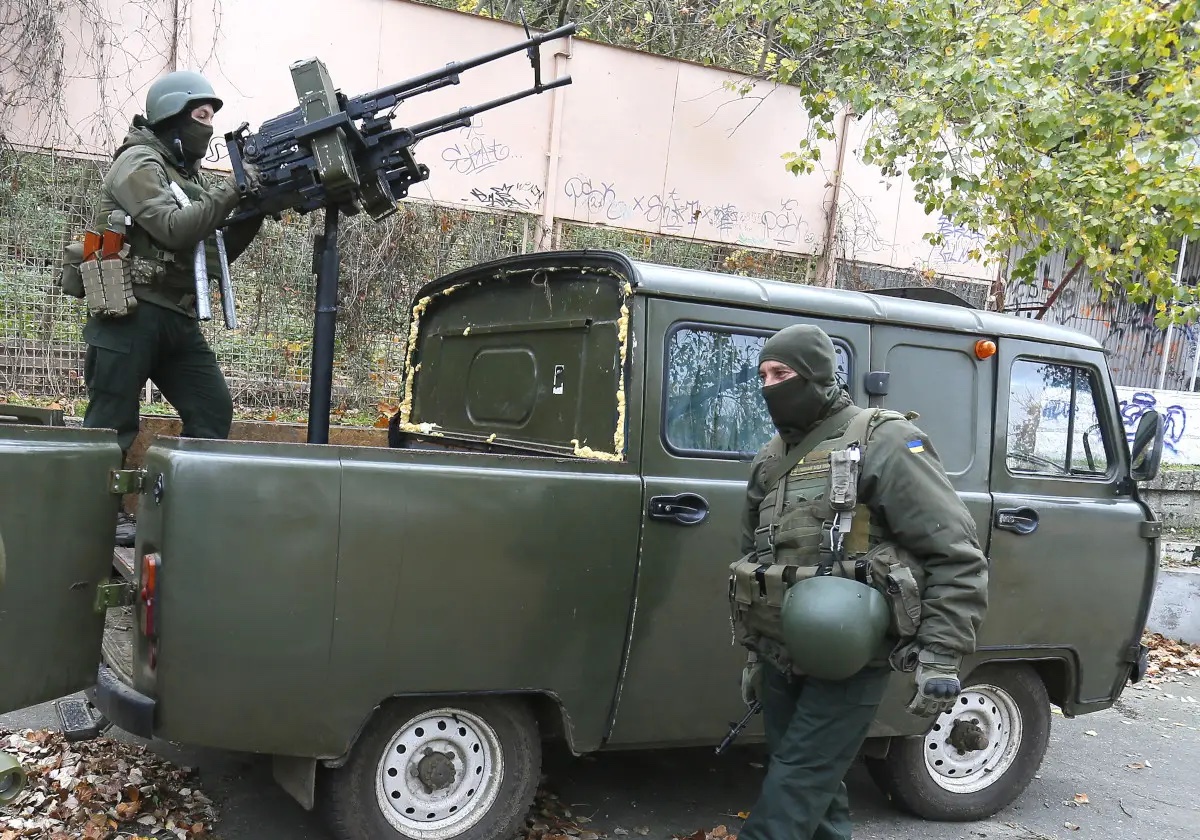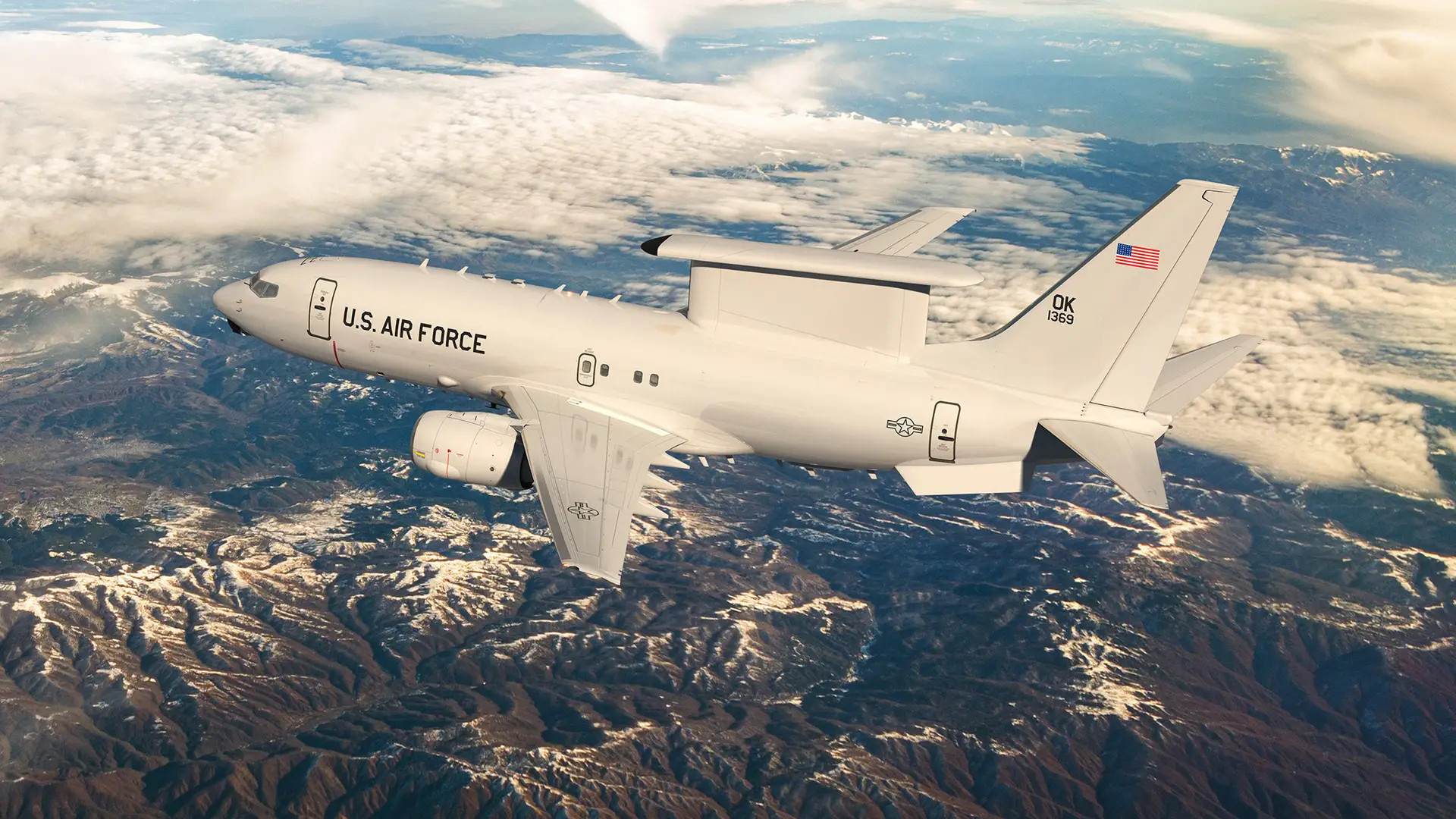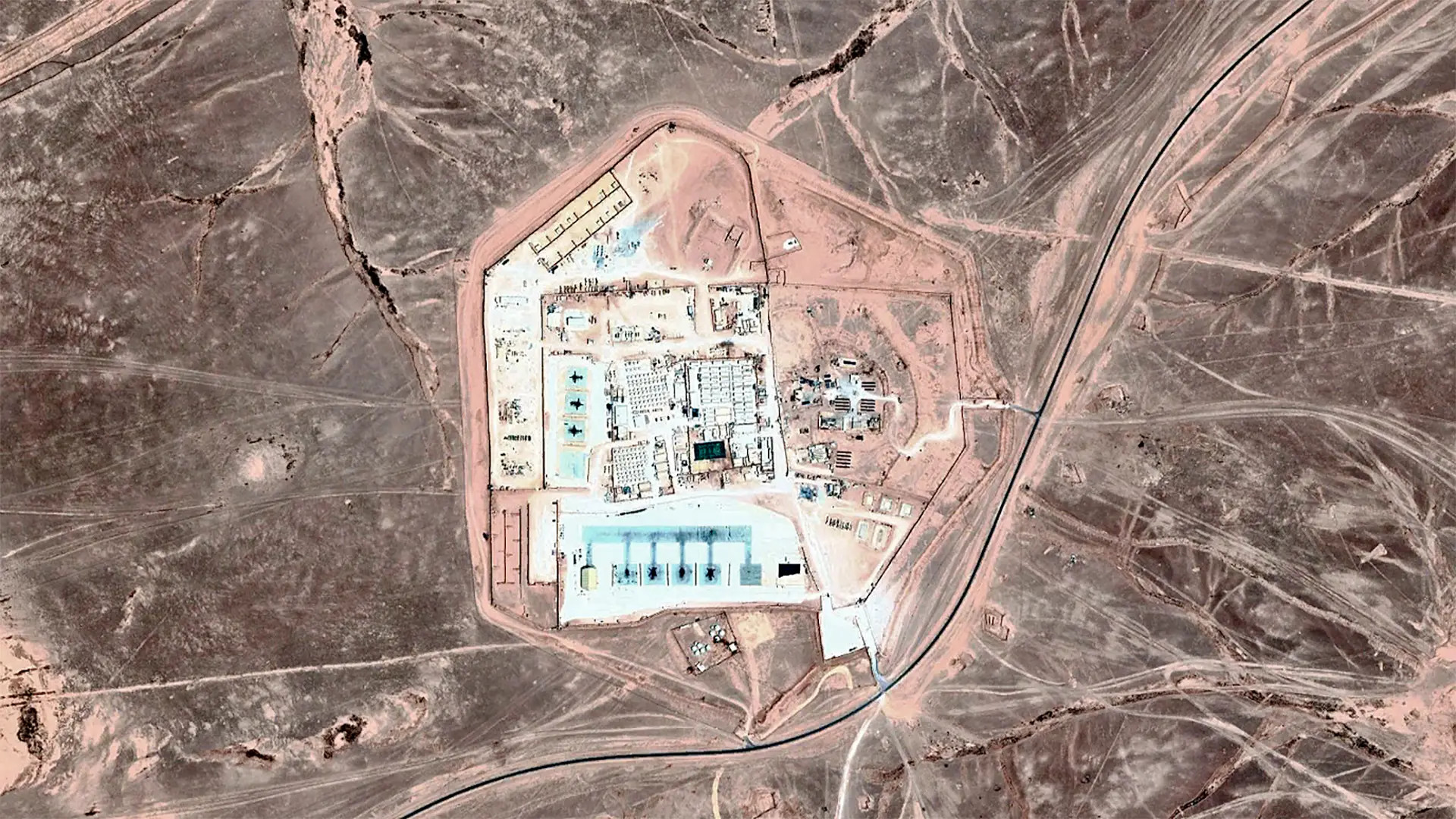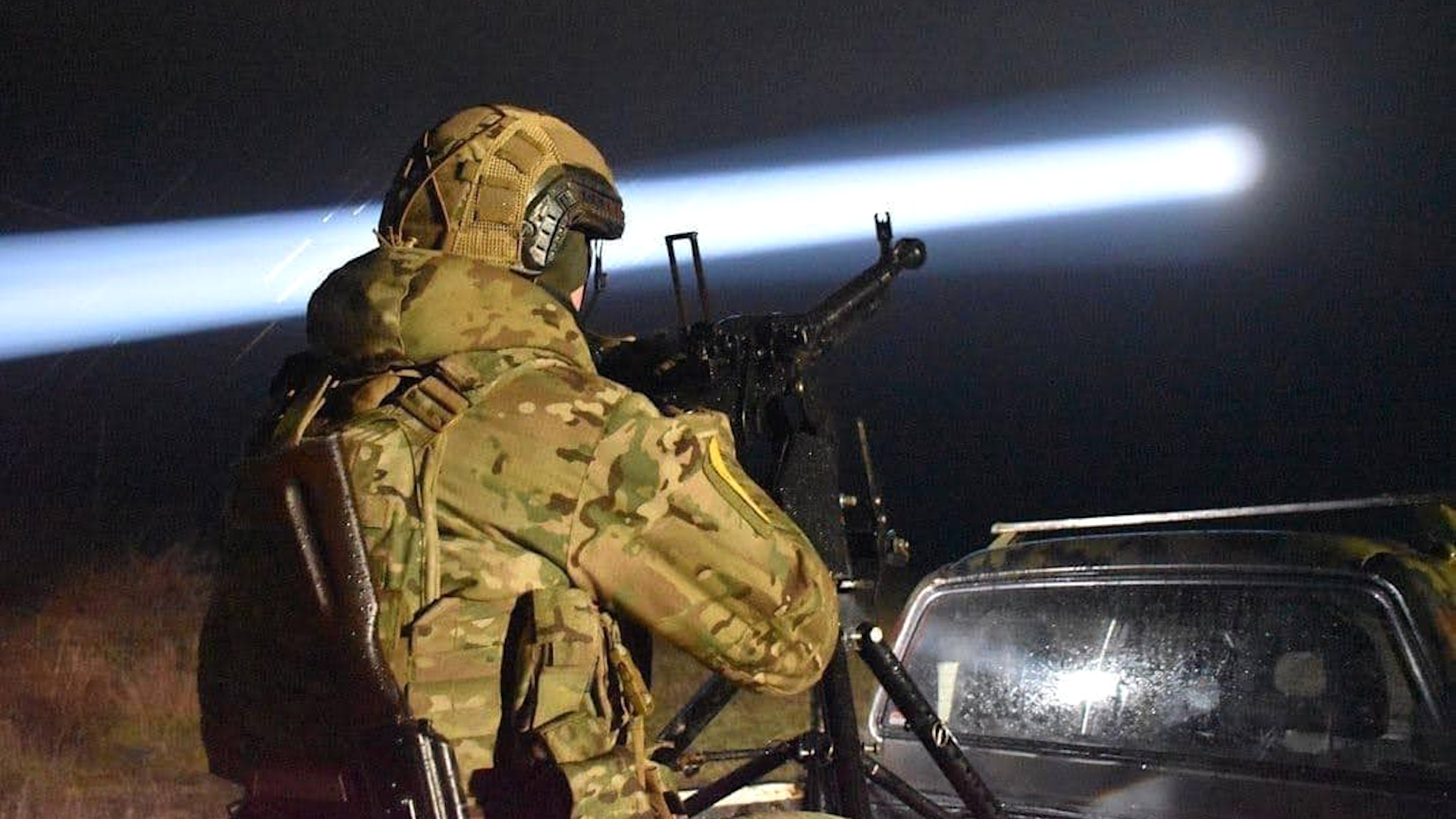Ukraine is using a network made up of thousands of acoustic sensors across the country to help detect and track incoming Russian kamikaze drones, alert traditional air defenses in advance, and also dispatch ad hoc drone hunting teams to shoot them down. This is according to the U.S. Air Force’s top officer in Europe who also said the U.S. military is now looking to test this capability to see if it might help meet its own demands for additional ways to persistently monitor for, and engag,e drone threats.
Gen. James Hecker, head of U.S. Air Forces in Europe (USAFE), as well as Air Forces Africa (AFAFRICA) and NATO’s Allied Air Command, provided the details about Ukraine’s acoustic sensor network and related air and missile defense issues at a press roundtable that The War Zone and other outlets attended earlier today. This gathering took place on the sidelines of this year’s Air & Space Forces Association Warfare Symposium, which opened today.

“At the unclassified level, Ukraine’s done some pretty sophisticated things to get after [a] persistent ISR [intelligence, surveillance, and reconnaissance]” picture of “low altitude objects,” Hecker explained. This now includes an acoustic sensor system that makes use of microphones designed to pick up and amplify ambient noise, he added.
“Think if you have a series of sensors, think of your cell phone, okay, with power to it, so it doesn’t die, right? And then you put a microphone to kind of make the acoustics louder of one-way UAVs that are going overhead,” Hecker explained. “And you have … 6,000 of these things all over the country. They’ve been successful in being able to pick up the one-way UAVs like Shahed 136s and those kinds of things.”

Kamikaze drones like the Shahed-136 may have relatively small engines, but they still produce a significant and often terrifying amount of noise, as you hear in the videos below.
The Ukrainians have been able to use the acoustic sensor data “to be able to track them and then eventually put that together, get that picture out to a mobile … team that is further out, that now shoots it down with AAA [anti-aircraft artillery], [which] they train a guy in six hours how to utilize,” Hecker added.
How the acoustic sensor information is disseminated is unclear, but this could very well involve leveraging an existing ad hoc drone spotting network that Ukraine has had in place for some time now that allows volunteers to post alerts via the Telegram online messaging service.
Hecker’s pointed mention of AAA (anti-aircraft artillery), a term used to describe various types of anti-aircraft guns, reflects broader comments he made today about the cost-effectiveness of those weapons against drones. We will come back to that one later.
Most of Ukraine’s counter-drone teams rely heavily on improvised weapon systems typically consisting of various types of machine guns and automatic cannons mounted on different types of light vehicles. Their means of spotting and tracking drones themselves, especially at night, are typically limited to very localized capabilities like night vision and thermal optics, laser pointers, and searchlights.
Details about the Ukrainian acoustic sensor network have been “briefed to several people now, including the Missile Defense Agency,” Hecker added. “We’re looking at doing some tests to see if that’s something we can export out into NATO.”
Hecker said that this kind of acoustic sensor capability could have applications outside of NATO, too, and potentially against other categories of aerial threats beyond drones. It’s worth noting that before the widespread adoption of radar, the U.S. military and other armed forces around the world used various types of systems designed to detect incoming aircraft based on their acoustic signature. By the end of World War II, such systems had largely fallen into disuse.

However, many modern aerial threats, including small, low-flying drones and cruise missiles, and stealthy crewed and uncrewed aircraft and missiles, present significant challenges to even current-generation radars. Gen. Hecker first mentioned the U.S. military’s interest in Ukraine’s acoustic sensor network at the roundtable today while talking about challenges NATO is facing in maintaining a persistent ISR picture when it comes to things like kamikaze drones and cruise missiles.
“What it does, you know, when it’s airborne, it will give us a persistent picture, ISR picture, down to low altitude, where many of these one-way UAVs and cruise missiles operate at,” Hecker said about the E-7A Wedgetail airborne early warning and control aircraft that the Air Force and NATO are in the process of acquiring. “And it has a pretty good capability in the range that it can detect those type of threats.”
“Unfortunately, they’re [the E-7s] not coming off the line starting tomorrow,” he continued. “So we have to look for … interim solutions.”

Acoustic sensors like the ones that Ukraine is now employing could be one such interim solution, and one that is also substantially cheaper to implement than something like a fleet of E-7s.
Hecker also mentioned tethered aerostats with “a payload on it that has the capacity to detect these one-way UAVs” as something that he was hoping would be “delivered” within six months to a year. “And now you get that for a long time, right? … it can stay up pretty much nonstop unless the winds get really struggling, and you may have to reel it down for a little bit.”
It’s not immediately clear whether he was referring to a capability the U.S. military is planning to deploy in Europe or somewhere else, or something that might be happening elsewhere within NATO. The U.S. government did just recently approve a possible sale of aerostat-based aerial surveillance systems to Poland, which you can read more about here.
However it is done, “if we can get this persistent air picture, if we can get that then we can predict how fast they’re going [and] what heading they’re on,” Hecker noted. “Then we can use things that get us on the right side of the cost curve, like AAA, … something that we haven’t probably talked about in a long time. But [it is] very cost efficient using AAA [to] take these things [like kamikaze drones] down.”
“I think you’ll see this proliferate more and more, which makes the importance of coming up with a low-cost solution to taking these things down” even more pronounced, according to Hecker. “I’m working hard with industry to … come up with a solution that puts us on the right side of the cost curve. So we’re not taking a $700,000 missile and shooting down a $5,000 drone.”
Hecker specifically cited the use of long-range kamikaze drones by Iranian-backed groups, including the Houthis in Yemen, against U.S. forces on land and at sea across the Middle East in recent weeks as examples of how this threat is already expanding in scale and scope. Just on January 28, a kamikaze drone notably killed three U.S. service members at a forward base called Tower 22 in Jordan near the border with Syria.

The Houthis have also been launching kamikaze drones, as well as ballistic and cruise missiles, at targets in Israel and foreign warships and commercial vessels in and around the Red Sea.
Hecker even noted that the growing use of kamikaze drones themselves has caught the attention of the U.S. military. He also highlighted unspecified “things to distract an IADS [integrated air defense system] that [are] relatively cheap,” when asked about other capabilities being employed in Ukraine now that could be of interest to American forces. It’s unclear whether this comment about decoy capabilities refers to ones the Ukrainians, the Russians, or both have been employing in the conflict, a topic The War Zone has been following closely. The general might have even been referring to the use of kamikaze drones as decoys, an adjacent role that many such designs would be well suited for as we have highlighted in the past. Just using the Shaheds to prove routes to target areas, and stimulating enemy air defenses along the way, so that higher-end systems, like cruise missiles, can be sent after them in a more survivable manner is a known tactic.
It is important to remember that, as The War Zone routinely highlights, the threat posed by various tiers of drones to targets on and off traditional battlefields has been real for years now and only continues to grow. The U.S. military continues to largely play catch-up to this reality.
Perhaps Ukraine’s ‘back to the future’ acoustic sensor system may turn out to be new near-term way for the U.S. military to move forward in addressing the drone threat, as well as providing a more persistent ISR picture for air defenders overall, especially when it comes to small and low-flying targets.
Contact the author: joe@twz.com
